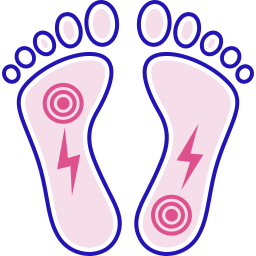Shoulder injuries can disrupt daily life, making it hard to perform simple tasks like lifting objects, reaching overhead, or even getting dressed. From rotator cuff tears to frozen shoulder, these injuries often cause pain, stiffness, and limited mobility. Physical therapy is a proven way to help you recover from these injuries, reduce pain, and regain movement without the need for invasive treatments.
We’ll explore how physical therapy can help shoulder injury recovery and what you can expect during your sessions.
Common Shoulder Injuries
Your shoulder is a complex joint that allows a wide range of movement. However, its complexity also makes it prone to injury. Some common shoulder injuries include:
- Rotator cuff injuries – Damage to the muscles and tendons that support shoulder movement.
- Frozen shoulder – Stiffness and pain that limit the shoulder’s range of motion.
- Shoulder impingement – Tendons in the shoulder are pinched or irritated, causing pain.
- Dislocations and fractures – Injuries from falls, trauma, or overuse.
These injuries can occur from repetitive motion, sports, accidents, or even the natural wear and tear that comes with aging.
How Physical Therapy Helps Shoulder Recovery
1. Reducing Pain and Swelling
Physical therapy focuses on non-invasive techniques to reduce pain and inflammation. Therapists use methods like manual therapy, ultrasound therapy, and targeted exercises to ease discomfort. Research has shown that physical therapy leads to significant pain reduction and improved function in shoulder injuries.
2. Improving Mobility
After a shoulder injury, you may find it difficult to perform basic tasks like reaching up or out to the side. Physical therapy uses gentle stretching exercises to help restore your shoulder’s range of motion. Over time, these exercises improve flexibility, allowing you to move more easily.
3. Strengthening Muscles
Strengthening exercises target the muscles around your shoulder to improve stability and prevent future injury. These exercises are designed to protect and support the shoulder while ensuring that it heals properly. Strengthening the rotator cuff, for example, is essential in recovering from most shoulder injuries.
4. Enhancing Flexibility
Tight muscles and tendons often restrict shoulder movement after an injury. Physical therapy incorporates flexibility exercises to stretch these tissues and improve joint function. These exercises not only help restore movement but also reduce the chances of the injury returning.
5. Preventing Future Injuries
Physical therapy isn’t just about recovery—it also helps you avoid future injuries. Therapists teach you how to perform everyday tasks with proper form, whether you’re lifting heavy objects or engaging in sports, to protect your shoulder from re-injury.
What to Expect During Physical Therapy
During your first visit, a physical therapist will assess your shoulder injury and create a personalized treatment plan. Sessions typically include:
- Pain management techniques like ice, heat, or ultrasound.
- Exercises to improve strength, flexibility, and mobility.
- Guidance on proper movement techniques to prevent future injuries.
- Instructions for at-home exercises to support your recovery between sessions.
Success Story: A Life-Changing Recovery
“Arnel had been dealing with a shoulder injury for the past years, which made it difficult to lift his arm without pain. After visiting Bacci and Glinn Physical Therapy in Visalia, he underwent a series of treatments with Bob and his team. Over time, Arnel experienced significant improvement, regaining mobility and becoming almost pain-free. The personalized care and effective treatment made a lasting difference in his recovery.”
Arnel D.
Frequently Asked Questions
- How long does it take to recover from a shoulder injury?
Recovery times vary based on the severity of the injury. Some people may recover within a few weeks, while others might need several months of therapy. - Can physical therapy prevent shoulder surgery?
Yes, in many cases, physical therapy helps patients avoid surgery by improving mobility and reducing pain. - What kind of exercises will I do during physical therapy?
Your therapist will guide you through a variety of exercises designed to improve your shoulder’s strength, flexibility, and range of motion. - Will I need to do exercises at home?
Yes, at-home exercises are an important part of the recovery process. Your therapist will provide specific instructions to help you continue improving between sessions. - What if my shoulder injury doesn’t improve with therapy?
If you don’t see improvement with physical therapy, your therapist may recommend further evaluation or additional treatments, such as injections or surgery.
Start Your Recovery Today
Don’t let shoulder pain keep you from living your life. Physical therapy is an effective, non-invasive way to restore your shoulder’s strength and mobility. Schedule an appointment with Bacci and Glinn Physical Therapy today.
Call our clinics in Visalia at (559) 733-2478 or Hanford at (559) 582-1027 and start your journey toward a pain-free life.
References:
- Lewis, J. S. (2007). Rotator cuff tendinopathy: A model for the continuum of pathology and related management. Journal of Orthopaedic & Sports Physical Therapy. Link here.
- Silveira, A., et al. (2024). Shoulder specific exercise therapy is effective in reducing chronic shoulder pain: A network meta-analysis. PLoS ONE, 19(4), e0294014. Link here.





